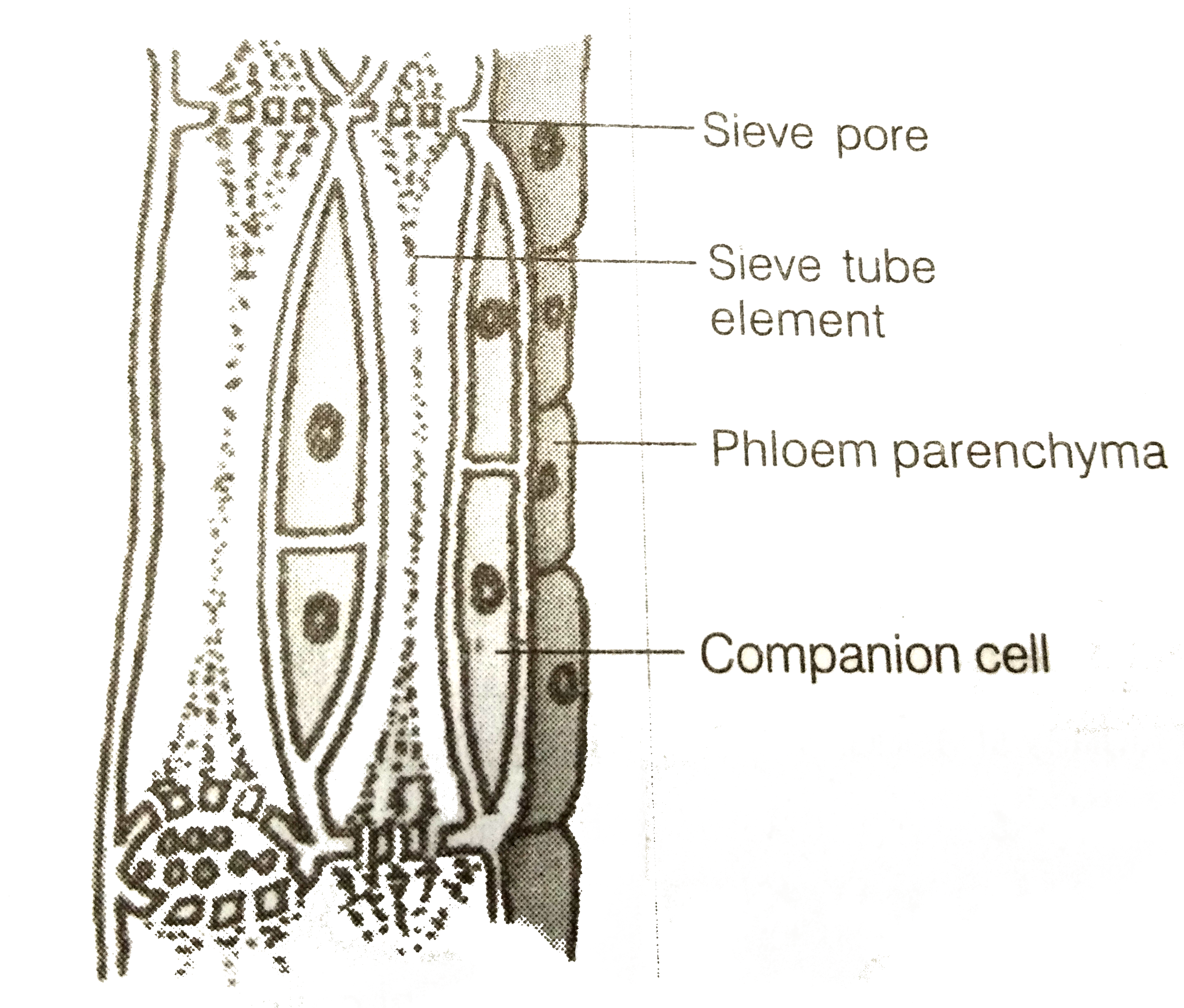Write the precise function of
(a) sieve tube
(b) interfascicular cambium
(c) collenchyma
(d) aerenchyma.
Sieve tube
It is present in the phloem tissue. It's function is the transporation of synthesised food through out the plant

Interfascicular Cambium
In's function is to bring about secondary growth in the dicot stem and root. It is a kind of secondary meristematic tissue present in between two vascular bundles.

Collenchyma
It's function is to provide mechnical support to young growing herbaceous stem. It's cells have angular thickening at corners.
(#ARH_NCERT_EXE_BIO_XI_C06_S01_042_S03.png" width="80%">
Aerenchyma
It provides buyoncy to the hydrophytic plants. It is a specialised parenchyma having large air spaces.
 .
.
Topper's Solved these Questions
- BOOK - NCERT EXEMPLARCHAPTER - ANATOMY OF FLOWERING PLANTSEXERCISE - Long Answer6videos
ANATOMY OF FLOWERING PLANTS
- BOOK - NCERT EXEMPLARCHAPTER - ANATOMY OF FLOWERING PLANTSEXERCISE - Very Short Answer13videos
ANATOMY OF FLOWERING PLANTS
- BOOK - NCERT EXEMPLARCHAPTER - ANIMAL KINGDOMEXERCISE - LONG ANSWER TYPE QUESTIONS4videos
ANIMAL KINGDOM
Similar Questions
Knowledge Check
- Question 1 - Select One
The chief function of sieve tubes is
ATo translocate the organic materials manufactured in the leavesBTo conduct mineralsCTo transport water from root to leavesDTo help to plant in forming wood - Question 2 - Select One
The cell functionally associated with sieve tube is -
APhloem fibresBPhloem ParenchymaCCompanion cellDCollenchyma - Question 3 - Select One
The cell functionally associated with sieve tube element is -
APhloem fibresBPhloem ParenchymaCCompanion cellDCollenchyma
Write the function of the following: (a) Microtubules (b) Sphaerosome (c) Endodermis (d) Companion cells (e) Lenticles
View SolutionWrite the functions of the following
(a) Centromere (b) Cell wall
(c) Smooth ER ( d) Golgi apparatus
( e) CentriolesView SolutionThe study the following :
A) Formation of tracheary elements from the derivatives of cambium
B) Formation of interfascicular cambium and cork cambium from living permanent parenchyma cells.
C) Formation of secondary vascular tissues or cork and secondary cortex from the derivatives of lateral meristems .
D) The ability of plants to follow different pathways in response to the environment or phases of life to form different kinds of structures.
A, B, C and D respectively areView SolutionAssertion :- Interfascicular cambium is the dedifferentiated tissue.
Reason :- In interfascicular cambium cells attain definite shape and function and lost power of division.View SolutionWhich of the following tissues is composed of mainly dead cells?
A) Parenchyma
B) collenchyma
C) Aerenchyma
D) XylemView Solution

